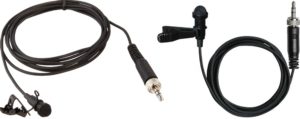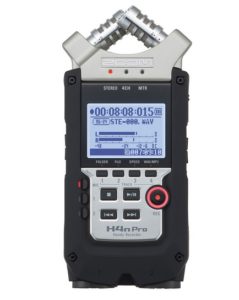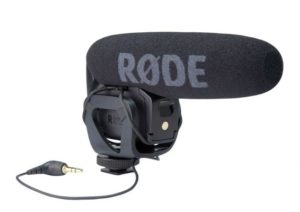Audio and Video go hand-in-hand
There is a constant debate in the video world: which is more important? Audio or video? Obviously, the answer is both. But too often videographers put more emphasis on the image quality and not audio. A beautiful image is what we, as videographers and filmmakers, should always be striving for. But good, crisp, clear audio is equally important.
In today’s Smart phone era anyone can make videos. We’ve all watched videos on Youtube and Facebook where the external noise (traffic, crowds, etc.) over power the person speaking in front of the camera. It is frustrating to listen to. When I was first trained in video production my instructor told me that people will watch a video if the image isn’t perfect, but they will not watch if the audio in horrible. Hot or clipped audio is offensive to listen to. Heavy static is annoying. And when there is no audio, why bother watching?
Many times I’ve had clients – whether a business owner inquiring about a marketing video, or an engaged couple inquiring about a wedding video – say to me “we really don’t care about the audio.” To which I usually reply, “if people are speaking, the audio matters.”
Recording audio
One of the first things I do when hired for a new video production is to determine how I’m going to record the audio and with what device. The built-in camera mic is never an option. Yes, it is fine to pick up some ambient noise, but like cell phones, these built-in mics easily peak or clip when noisy elements are too close to the camera. I rely on three various mic sources depending on the video shoot:
- Wireless lavalier mic(s)
- External audio recorders
- Directional mics
All of the above mics connect directly to my video camera via mic inputs. Let’s look at what each can do to improve a video’s audio.
Wireless lavalier mic:
When filming marketing videos and documentaries I always use a wireless lav mic system. These also my go-to mic during wedding ceremonies. Lav mics clip on to the subject. The wire is conveniently hidden under clothing. These mics feed into my cameras via a transmitter (on the subject) and receiver (connected to my cameras.) You may notice these mics on talk shows, reality shows and TV interviews. Lav mics bring my subjects voices front and center. Yes, there may be external noise in the background, but the mic is aimed towards the subjects mouth and in close proximity, providing clear, clean audio. The Sennheiser wireless mic system that I use also includes a hand held mic which I use during event commentary or video messages to brides and grooms.
Here are two examples of my use of the wireless lav mic system. The first is a wedding ceremony. I mic’d up the officiant and the groom for the ceremony which picked up the bride’s voice nicely too:
The bridesmaid towards the end was speaking into a handheld mic provided by the DJ. This audio I picked up with an external recorder which I will talk about shortly.
Here is another example of how I used a wireless mic during an awards luncheon for the Holocaust and Human Rights Center in Maine a few years ago. Normally I would plug my audio recorder into the sound system provided by the function room, but the system did not have an output source. So I simply wrapped a wireless mic cord around the mic at the podium.
External audio recorders:
I have two Zoom H series audio recorders. External recorders are used for a number of purposes: recording directly from instruments, sound boards, or speakers. They provide clean, crisp audio directly from the source. I can also connect the Zoom directly to my camera via XLR cables.
I use my recorders during speaker forums, concerts, and wedding receptions; usually plugging into the sound system. A sound check with the sound technician is a must-do prior to recording. The recorder records directly onto its own SD card. I also use the built-in camera mic so I can sync up the two audio sources during editing. I lower or drop the camera audio once the sources are sync’d. Here is an example from a wedding I shot in 2017. I plugged my recorder directly into the DJ’s sound board to capture the toasts:
Directional Mic’s:
A directional mic (or shot gun mic) provides sound directly in front of the camera in the direction the camera is facing. It also reduces the sound on either side of the mic – a better option than the built-in camera mic. Directional mics secure to my camera via a hot shoe and connect via audio input. I use directional mics mostly to capture ambient noise during events, business web videos, and on location shoots where subjects aren’t speaking directly to the camera.
The example video below is a short marketing web video I produced in 2018. The directional mic was used to capture some of the ambient noise during the yoga class. I later filmed the yoga instructor speaking before the camera, and for this I mic’d her with a wireless lavalier.
So yes, audio really matters. A professional videographer should always strive for a great image along with great audio. It can make or break a video.
To book a video shoot please fill out my short contact form here.

